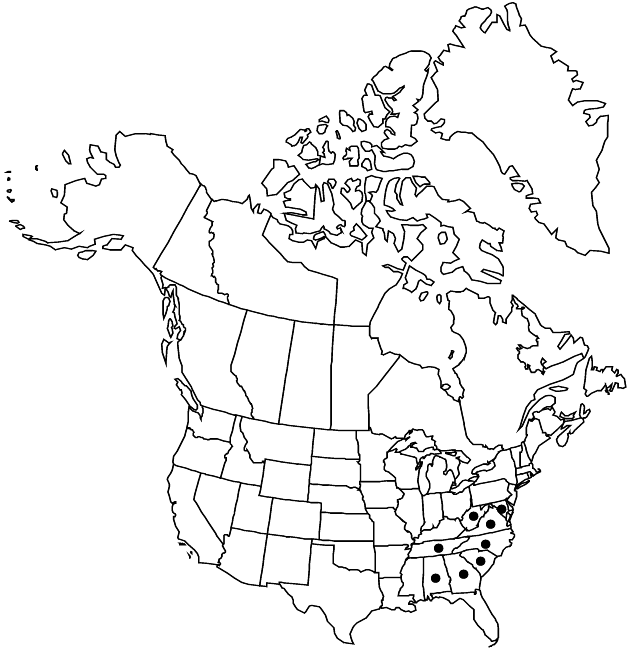Difference between revisions of "Solidago roanensis"
Bull. Torrey Bot. Club 19: 130. 1892.
FNA>Volume Importer |
imported>Volume Importer |
||
| (One intermediate revision by the same user not shown) | |||
| Line 8: | Line 8: | ||
}} | }} | ||
|common_names=Roan Mountain goldenrod | |common_names=Roan Mountain goldenrod | ||
| + | |special_status={{Treatment/ID/Special_status | ||
| + | |code=E | ||
| + | |label=Endemic | ||
| + | }} | ||
|basionyms={{Treatment/ID/Basionym | |basionyms={{Treatment/ID/Basionym | ||
|name=Solidago monticola | |name=Solidago monticola | ||
| Line 71: | Line 75: | ||
|publication title=Bull. Torrey Bot. Club | |publication title=Bull. Torrey Bot. Club | ||
|publication year=1892 | |publication year=1892 | ||
| − | |special status= | + | |special status=Endemic |
| − | |source xml=https:// | + | |source xml=https://bitbucket.org/aafc-mbb/fna-data-curation/src/2e0870ddd59836b60bcf96646a41e87ea5a5943a/coarse_grained_fna_xml/V19-20-21/V20_243.xml |
|tribe=Asteraceae tribe Astereae | |tribe=Asteraceae tribe Astereae | ||
|genus=Solidago | |genus=Solidago | ||
Latest revision as of 20:01, 5 November 2020
Plants 20–100 cm; caudices branched, sometimes elongate. Stems usually single, glabrous proximally, hirsuto-puberulent in arrays, sometimes irregularly or decurrently so proximally. Leaves: proximalmost withering, smaller; basal and proximal cauline tapering to winged petioles, blades elliptic to elliptic-obovate or subrhombic, mostly 60–150 × 10–50 mm, margins serrate, usually acuminate, glabrous or scabrellous distally; mid and distal cauline sessile, blades mostly rhombic-elliptic to narrowly lanceolate, 20–40 × 5–8 mm. Heads 50–250, in elongate, narrowly paniculiform arrays, leafy-bracteate proximally, not secund, proximal branches sometimes elongated and ascending. Peduncles 1–4 mm, bracteolate. Involucres campanulate, 4–6 mm. Phyllaries in 3–4 series, appressed, unequal (outer 1/2 length of inner), linear to lanceolate-deltate (inner series usually striate with 2 prominent secondary nerves), apices narrowly acute or minutely obtuse. Ray florets 6–9; laminae 2–3 × 1–1.5 mm. Disc florets mostly 8–12; corollas 4–4.5 mm, lobes 1–1.5 mm. Cypselae (tan) 1.75–2.5 mm, usually glabrous, sometimes sparsely strigose; pappi 1.5–2.5 mm. 2n = 18.
Phenology: Flowering Jul–Sep.
Habitat: Woods and clearings, edges of balds, crevices in rocks, mountain provinces
Elevation: 500–2000 m
Distribution

Ala., Ga., Md., N.C., S.C., Tenn., Va., W.Va.
Discussion
Selected References
None.